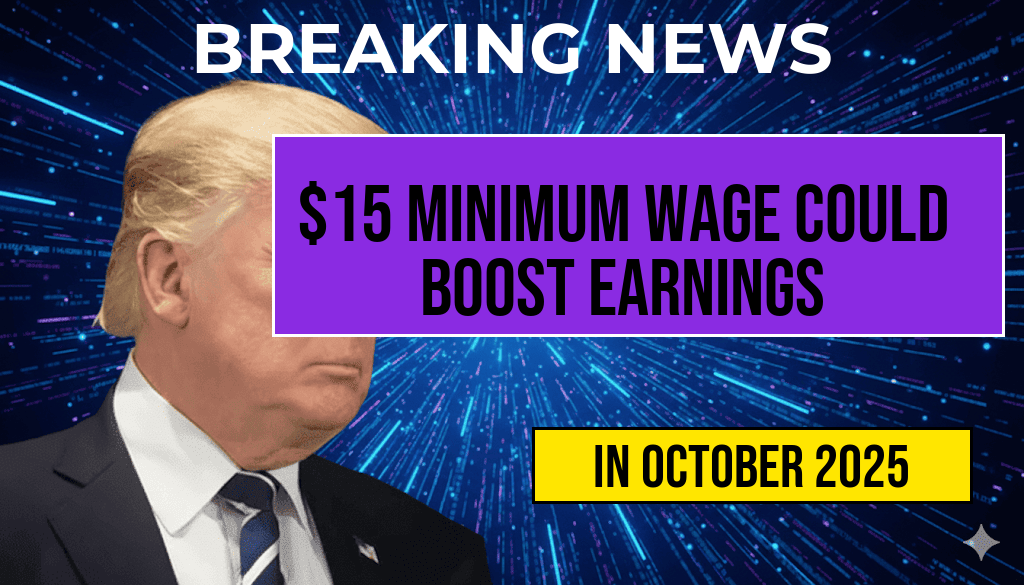A recent study indicates that implementing a federal minimum wage of fifteen dollars per hour could significantly increase earnings for millions of American workers. Specifically, an estimated 32 million workers could see an average annual income boost of approximately $3,300. This projection underscores the potential economic impact of raising the minimum wage, highlighting both its capacity to improve living standards and its implications for employers and policymakers alike.
Potential Economic Benefits of Raising the Federal Minimum Wage
The analysis, conducted by economic researchers specializing in labor policy, suggests that a $15 federal minimum could serve as a catalyst for wage growth across various sectors. With current federal standards standing at $7.25 per hour since 2009, many argue that the stagnant rate fails to keep pace with inflation and rising living costs. Advocates for the increase contend that boosting the minimum wage would reduce income inequality, increase consumer spending, and stimulate economic activity.
Impact on Workers’ Earnings
According to the study, the average annual earnings increase of approximately $3,300 for the 32 million affected workers translates to tangible improvements in daily life. For full-time employees working 40 hours per week, this increase could amount to roughly $80 more per week, providing additional financial flexibility. The affected demographic includes low-income workers across industries such as retail, hospitality, and healthcare.
Distribution of Benefits by Industry
| Industry | Number of Workers Affected | Average Annual Increase |
|---|---|---|
| Retail | 12 million | $3,500 |
| Hospitality & Food Service | 8 million | $3,200 |
| Healthcare Support | 4 million | $3,100 |
| Other Sectors | 8 million | $3,400 |
Broader Economic and Social Implications
While the direct financial benefits for workers are evident, proponents argue that raising the minimum wage could also contribute to broader societal advantages. Increased earnings may lead to reduced reliance on social welfare programs, lower poverty rates, and improved health outcomes. Additionally, higher wages might decrease employee turnover and enhance productivity, offering long-term gains for employers.
Challenges and Counterarguments
Opponents of raising the minimum wage caution that such a policy could lead to unintended consequences, including increased labor costs for businesses, potential layoffs, or shifts in employment patterns. Small businesses, in particular, may face difficulties absorbing higher wage expenses without raising prices or reducing staffing levels. Economic models suggest that the actual impact varies based on regional economic conditions and industry-specific factors.
Policy Context and Future Outlook
The debate over the federal minimum wage remains central to discussions on economic equity and competitiveness. Several states and municipalities have already adopted higher minimum wages, with many converging around the $15 mark. The Biden administration has signaled support for raising the federal baseline, aligning with efforts to address wage stagnation and income disparity.
For more details on the history and debates surrounding the federal minimum wage, refer to the Wikipedia entry. Additionally, insights into the economic implications can be found through analyses published by Forbes.
Frequently Asked Questions
What is the proposed new federal minimum wage?
The proposed federal minimum wage is fifteen dollars per hour, aiming to increase earnings for millions of workers across the country.
How many workers could benefit from the minimum wage increase?
Approximately thirty-two million workers could see a boost in their annual earnings if the minimum wage is raised to fifteen dollars per hour.
What is the estimated boost in annual earnings for workers?
The study estimates that raising the minimum wage to fifteen dollars could increase annual earnings by about three thousand three hundred dollars for eligible workers.
How might this wage increase impact the economy?
Increasing the federal minimum wage could lead to higher consumer spending, improved living standards, and reduced poverty among low-wage workers.
When could the proposed minimum wage take effect?
The article does not specify an exact timeline, but such policy changes typically involve legislative processes before implementation.

Leave a Reply